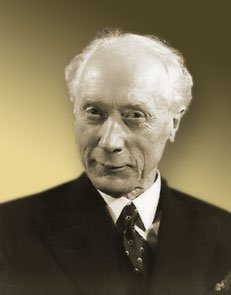
How It All Began
The Story Behind F.M. Alexander’s Discovery
Frederick Matthias Alexander (1869-1955) was born in Tasmania, Australia. Known to his close friends and students as “FM,” he made a name for himself as an actor and reciter. Alexander’s rich voice and captivating stage presence won him acclaim, but behind the scenes, he struggled with a recurring issue that threatened his burgeoning career—sudden voice loss.
Determined to pursue a life in the theatre, Alexander’s passion was put to the test when his voice continued to fail him, especially during performances. Despite seeking help from doctors who advised rest, he found only temporary relief. Refusing to accept that his condition was beyond his control, Alexander began to suspect that his voice problems were not due to an inherent defect but were linked to something he was unknowingly doing to himself.
A Personal Crisis Leads to Self-Discovery
This realisation marked the beginning of a ten-year journey of self-exploration. Without any clear medical guidance, he turned to rigorous self-observation, using multiple mirrors to study himself while performing. He noticed that, whenever he spoke or prepared to perform, he unconsciously pulled his head back, compressed his throat, and gasped for breath. These patterns of tension were not limited to his voice but extended throughout his entire body, influencing how he moved, stood, and even thought.
Alexander discovered that simply trying to change his habits through sheer effort was ineffective. It became clear that his habitual actions were not driven by conscious choice but by ingrained patterns of reaction. This led to a profound understanding: true change does not come from force but through a kind of conscious release, a letting go that allows for something new to emerge.
The Discovery of Primary Control and the Role of Inhibition
Through his careful observations, Alexander identified the critical role of the relationship between the head, neck, and back, which he termed the Primary Control. This relationship was key to the coordination and balance of the entire body. By allowing his head to move forward and up, while letting go of unnecessary tension, Alexander discovered a newfound ease that extended far beyond his voice.
Central to this insight was the concept of inhibition. Unlike Freud’s notion of unconscious repression, Alexander’s inhibition was about conscious choice. It involved creating a pause—not to resist or suppress, but to create a moment of stillness where habitual patterns could dissolve, making room for a more intentional response. Inhibition was not about doing less but about allowing more—a return to a natural state of balance.
Refining Alignment and Ease
Through years of experimentation and self-observation, Alexander formulated what he called the Primary Directions:
“To let the neck be free, to let the head move forward and up, to let the back lengthen and widen.”
These were not rigid instructions but guiding thoughts that encouraged a natural release, allowing the body to align itself more freely. Rather than imposing a posture, the focus was on letting go of habitual tension. By simply thinking of the head moving forward and up, and the back lengthening and widening, Alexander discovered a subtle, yet profound shift throughout the entire system.

A Technique for Prevention
Alexander soon realised that the Technique was not just a remedy for existing problems but also a powerful tool for preventing future discomfort and dysfunction. The emphasis on conscious inhibition and thoughtful direction became a way to preemptively address the habits that often lead to chronic tension, pain, and stress. By cultivating an awareness of how one moves, stands, and responds to daily challenges, individuals could intercept harmful patterns before they manifested as physical symptoms.
In this way, the Technique acts as a preventative practice, supporting a healthier, more balanced use of the self. It’s not just about fixing what’s broken but about maintaining a state of ease and fluidity, reducing the likelihood of discomfort and strain in the first place. This proactive approach empowers people to navigate life’s demands with greater resilience, turning everyday activities into opportunities for growth and well-being.
Teaching and Expanding His Work
By 1904, Alexander began teaching his Technique in Melbourne, Australia. Seeking a larger audience, he moved to London later that same year, where his work quickly gained recognition. His approach attracted influential figures like John Dewey, Aldous Huxley, and George Bernard Shaw, who saw the profound potential of his discoveries.
In the 1920s, Alexander travelled to the United States, where his methods were embraced by educators, performers, and medical professionals. This expansion helped to solidify his reputation as a pioneer in the field of mind-body coordination. As demand for his teachings grew, Alexander established a formal training course for teachers in London in 1931, ensuring that his Technique would continue to benefit future generations.
A Timeless Approach to Well-Being
Though Alexander’s insights predated modern scientific understanding, today’s research increasingly validates his approach. Studies in neuroplasticity, muscle function, and the nervous system highlight the profound impact of conscious control and releasing unnecessary tension. The principles Alexander discovered align with our current understanding of the mind-body connection, revealing that meaningful change is not only possible but transformative.
The Alexander Technique remains a timeless guide for those seeking to navigate life with greater awareness and ease. By addressing the unconscious patterns that shape us, it opens the door to a life lived with more balance and clarity—a life where we can meet each moment with presence and choice.

